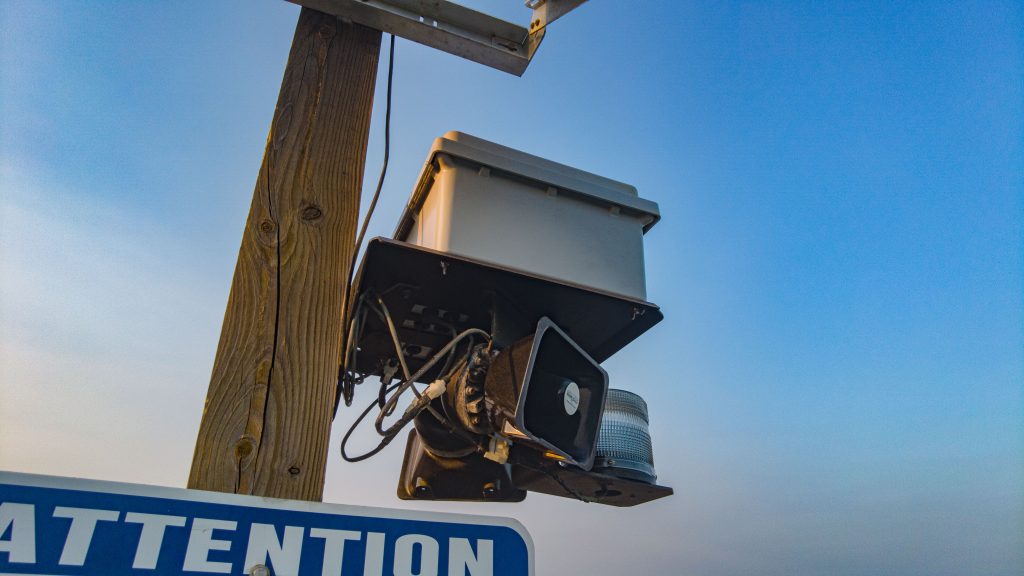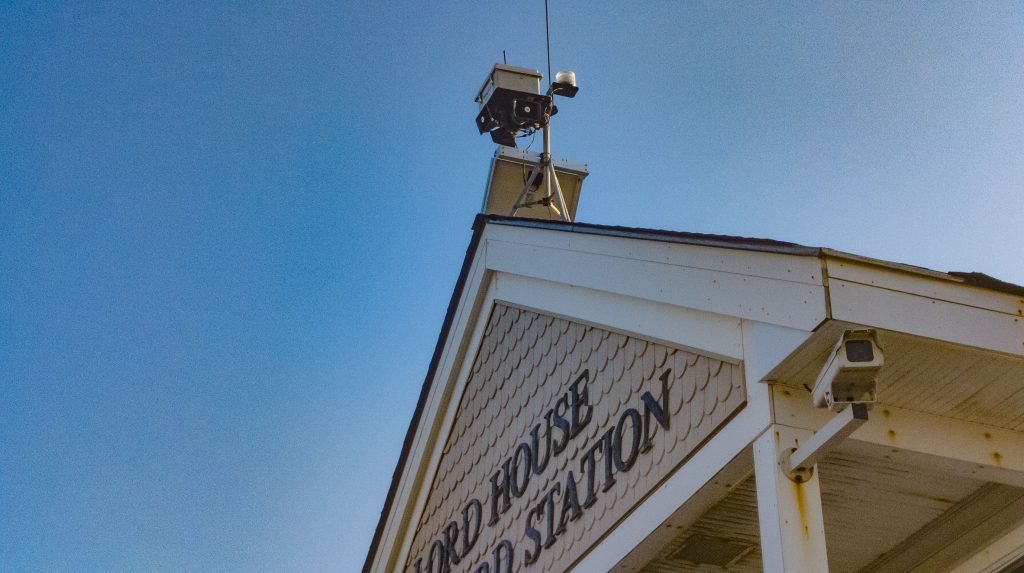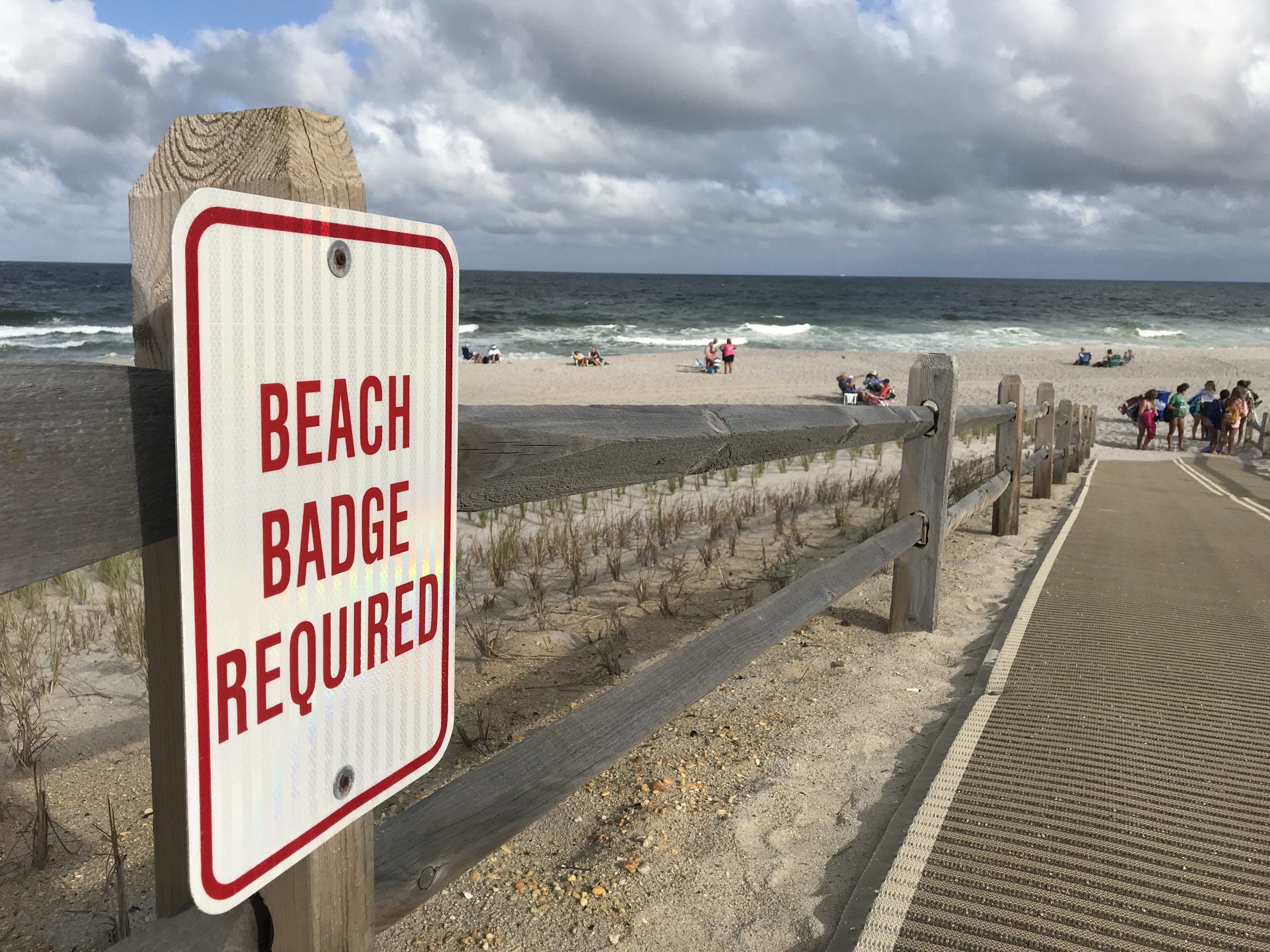Seaside Park’s lightning detection system has been running at the borough’s beachfront most of the summer, with one detection array that can pinpoint lightning strikes up to 20 miles away and three alert stations housing sirens and strobe lights to inform beachgoers. But its hours have been limited to those with lifeguards on duty, which many have argued is the time when the system is least in demand since guards are already monitoring conditions.
As discussed at a previous meeting of the borough council, the issue is that of liability. The borough’s implementation plan for the detection system includes a so-called “weather watcher” who confirms the system is working and physically manages the act of telling people to leave the beach and boardwalk during lightning events. Without that person working, Borough Attorney Steven Zabarsky said leaving the system to its own devices could lead to lawsuits if a person is injured in a lightning strike and it was found there was no weather watcher to announce a beach closure, notwithstanding the lights and sirens.
The revelation that the system would be turned off each day proved unpopular with council members and some residents, who brought up concerns that the point of purchasing the system – public safety – would be impacted by having the system shut down during the hours of evening and nighttime events on the beach, and times when surf fisherman are present before and after lifeguards are on duty. Then, of course, there is the wider concern that beaches remain popular after the official swimming season as the weather remains mild through much of the fall.
“As we said at the last session, we implemented the plan and accepted it as written so we had something in place and we were operational,” said Councilwoman Gina Condos. “What we meted out [in a committee meeting] was coming back with a proposal that the horns would go off from 6 a.m. to midnight, and the strobes – without the sound – would be active 24 hours per day.”
Condos said the proposal would leave the system active May 1 to Oct. 1 “since that is when most of the lightning storms would take place.” Turning off the sirens would also allay concerns of residents near the beach who were worried about being woken up by them at odd hours.
Borough Administrator Karen Kroon said after research, she determined the system runs a self-test every hour to confirm it’s active and communicating with the three siren stations. This automation could, in theory, act as its own “weather watcher.” An alternative proposal would be to appoint one police officer on each shift to serve in the weather watcher role.
Another alternative, officials said, would be to modify the implementation plan to address the issue of weather watchers. Kroon’s office reached out to the U.S. Lifeguarding Association for clarity on their guidelines for lightning detection systems, and is still awaiting a response.
Kroon said she also checked in with neighboring communities. Brick Township’s siren system runs a half-hour before lifeguards arrive to a half-hour after they leave, but is kept on until the final weekend of September. The system as a whole, however, remains active 24 hours per day, year round, with strobe lights only. Toms River’s system runs from 8 a.m. to 8 p.m. during the season, with Lavallette’s system mated to Toms River’s.
Over a 21 day-long period this summer during which officials tracked alerts, the system was activated on seven of those days, with the triggering storm detected at an average of 10 miles.
Zabarsky said regardless of what the council decides, the implementation plan needs to be modified to reflect how the system will run so the borough cannot be accused of violating its own regulations. Right now, that plan includes a person who physically tells people to leave the beach.
“The watcher is to physically say ‘Hey, this isn’t a fire or EMS siren, it’s lightning,’ Zabarsky said, adding that it would be “essential” for the borough to add signage explaining to the public how the system operates.
Kroon said her office was sent a copy of Brick Township’s implementation plan and is awaiting one from Toms River, and will wait on a response from the Lifeguarding Association before a new policy can be proposed, written and adopted.

Advertisement

Police, Fire & Courts
Police Investigating Possible Shots Fired in Seaside Heights

Police, Fire & Courts
Cops: Juvenile Arrested After 118mph Joy Ride in Seaside Heights, Toms River Kills 2

Seaside Heights & Seaside Park
Seaside Heights Mourns Passing of Boardwalk Legend, Still Working Into His 90s










